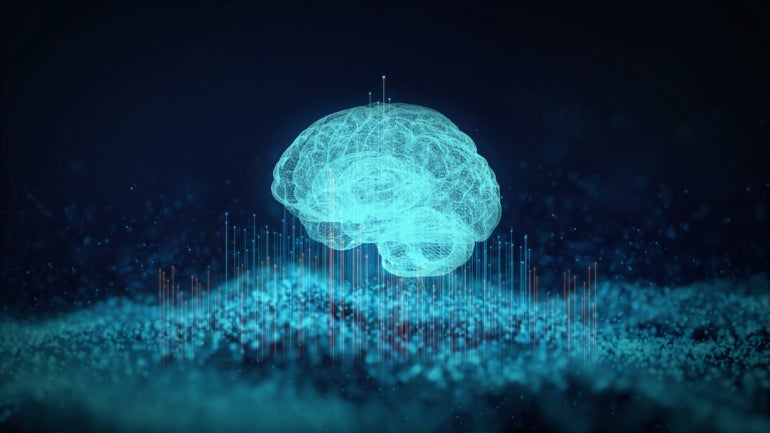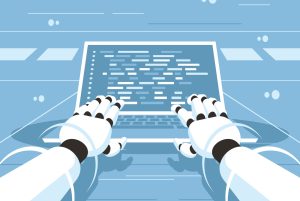As more technology runs business functions at the edge, new modes of managing that technology must also follow. AI and ML might just fit the bill.

The edge computing market is expected to grow from $40.84 million in 2022 to $132.11 million by 2028. This is a compound annual growth rate of 21.8% percent.
The use cases for the edge are limitless. Use cases can range from remote field offices operating drone fleets for utility and mining operations to employees working from home and automated manufacturing assembly lines.
As this movement to edge computing has unfolded, more non-IT professionals are being asked to manage the technology that is located at the edges that they occupy. Cloud solutions have also played an important role, since the cloud can collect and manage data for the edge in more nimble ways than a central data center can.
SEE: Don’t curb your enthusiasm: Trends and challenges in edge computing (TechRepublic)
Unfortunately, deployments like this can’t meet every edge processing demand. The non-IT employees charged with managing the edge can make mistakes. Transporting data to and from the cloud can be hampered by latency and security issues. The alternative is to find ways to make edge applications work in and of themselves, in a self-contained processing universe that relies heavily on automation.
To facilitate edge processing, artificial intelligence and machine learning play major roles. Edge AI and ML can be used in retail stores to track foot traffic in order to better assist store merchandisers in the presentation of goods and services, and edge devices (sensors, cameras, etc.) may be installed throughout the store to monitor foot traffic.
An AI model developed by company business analysts, users and IT/data science could “train” the edge AI with logical reasoning to assess traffic. From the initial intelligence, merchandisers see that goods are usually pulled from middle shelves in certain aisles of the store — then the model starts becoming less accurate.
The ML element of the AI sees a new emerging pattern that it “learns” from. It incorporates what it has learned from this pattern, and revises its analyses. It now says that goods are being pulled from new areas of the store.
In time, the retailer might decide to entirely revise its AI/ML modeling to look for other trends and patterns, but this is an example of how the combination of AI and ML can work together to enable self-operation and intelligent insights at the edge. What does IT need to do to enable this “do it yourself” insight automation at the edge?
How to optimize edge IoT using AI and ML
1. Choose the right use cases
Not every edge implementation is a candidate for total automation with AI/ML.
If you’re operating a drone fleet to survey sites and navigate through weather and other hostile conditions, it’s best not to completely automate all operational intelligence because of the unpredictability of situations.
The same goes for automated vehicle systems. There are too many unforeseen situations, like sensors failing in snowy conditions, or “illogical” human actions that can happen in a split second, to which the AI/ML will not be flexible enough to respond.
SEE: Artificial Intelligence Ethics Policy (TechRepublic Premium)
2. Architect your data transports
Even if you automate your AI/ML operations at the edge, there will be times when you will want to consolidate data or insights from the edge into a central data repository. This data repository might be on the cloud, or it might be at your central data center.
The flow of data that you want to move from the edge to more central points needs to be planned. This includes scheduling the times of day or night when data will be uploaded to central storage destinations.
3. Train non-IT personnel
Non-IT personnel who are being asked to monitor and secure data at the edge and use it in their daily work must be trained to perform those functions. At the IT level, this means that non-IT personnel need to be schooled in the basics of edge security and monitoring. Operationally, there will be a need to retrain personnel on how to do their jobs with the introduction of more automation.
For example, if you bring in edge IoT to automate a packaging operation and the AI triggers a maintenance alert, what does manufacturing do? Do they take the entire operation offline, revert to manual processes or perform some kind of failover? All of these contingencies need to be discussed and trained into the workforce.
SEE: Hiring Kit: IoT developer (TechRepublic Premium)
4. Tune the AI/ML
What happens when the insights you’re getting from your AI/ML are starting to drift away from what you know to be true? It likely means that the AI/ML model that you have been using needs to be revised.
AI/ML performance at the edge should be watched on a daily basis. As soon as “drift” from truth is detected from the insights the AI/ML is delivering, it’s time to revisit the AI/ML training model heuristics to see if anything needs to be freshened up. The gold standard goal for AI/ML accuracy is that it should conform to the observations from subject-matter experts 95% of the time.
5. Secure and maintain and edge equipment
Most edge equipment arrives at the door with only minimum security presets. It’s up to IT to set security on each IoT device so that it conforms to corporate standards.
Once edge technology is calibrated to corporate security standards, physical security measures that ensure that movable edge technology doesn’t fall into the hands of unauthorized personnel should also be taken.
At the software level, security can be applied by using multi-factor authentication. Additionally, zero trust networks can also be installed at the edge, as they can record every addition, subtraction and modification of IoT assets.
Finally, especially in field offices running equipment like drones or on manufacturing floors or medical clinics that use robots — if the equipment is movable, it should be locked down in cages when not in use, so only individuals cleared to access the equipment can do so.
Discover more about edge computing with a look at the top four best practices and the risks.
Source of Article



